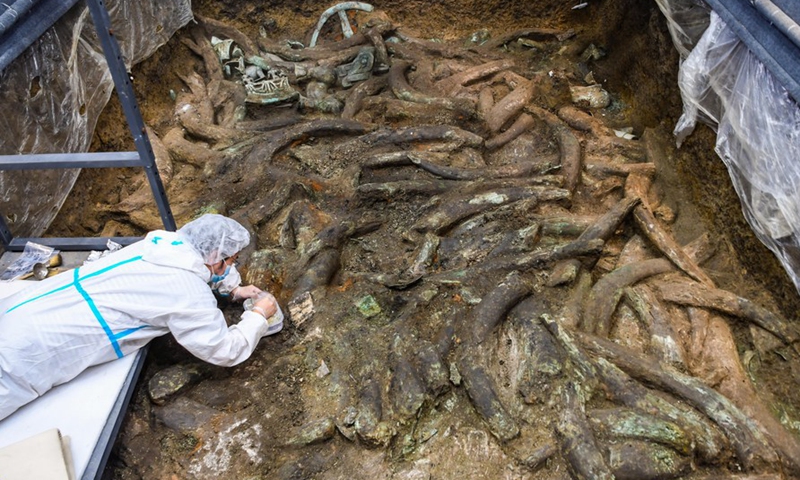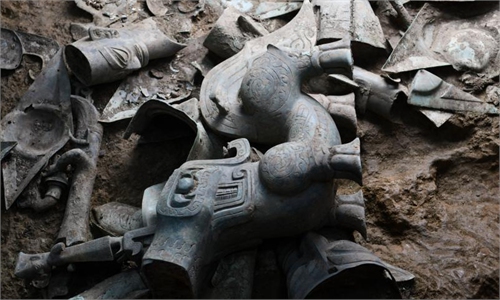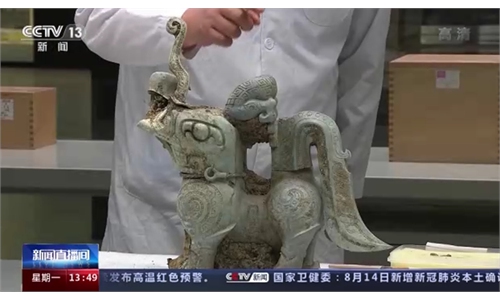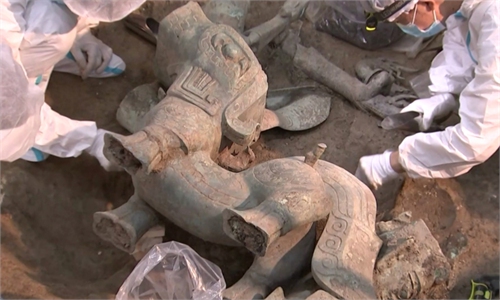ARTS / CULTURE & LEISURE
Culture Beat: Incident of relic being knocked down calls on proper behavior for best protection

An archaeologist works at the No. 8 sacrificial pit of the Sanxingdui Ruins site in southwest China's Sichuan Province, Sep 2, 2021.Photo:Xinhua
An ancient bronze figurine on display in China's famous archaeological site the Sanxingdui Ruins, was knocked down during a dispute between visitors on Wednesday.
The Sanxingdui Ruins, located in Southwest China's Sichuan Province, are known for the interesting cultural relics that have been discovered there over the past decades. Since its excavation in 1986, more than 15,000 cultural relics dating back to 3,000-5,000 years ago, have been unearthed. Among them are large animal bronzes, a dragon-head jade piece and gold masks, one of the world's greatest discoveries in the 20th century.
A standing bronze figurine from China's Shang Dynasty (1600-1046BC) was jarred from its stand so that it lay on the bottom of the display case due to a spat between two visitors on Wednesday. Right after a picture of this incident was posted online, it drew wide attention from home and abroad. Fortunately, the relic is safe and sound and has been put back on display.
The two visitors were educated. The museum also promised to increase security guards to protect its national treasures.
But preventing such incidents from happening again deserves more than that.
It is true that many museums around the world do not have many guards inside their exhibition halls, but their relics are still able to remain well-preserved.
According to reports, some museums have taken proper measures to prevent exhibits from falling over. For example, the Asian Art Museum in San Francisco uses special methods to prevent relics from falling down even during earthquakes. The museum installed equipment hidden under the bottom of the display cases and quake-proof stands to ensure the safety of relics or put heavy objects into the exhibits to lower the center of gravity of the relics, or fixed the relics to stands made of special metal materials.
However, the best protection of cultural relics boils down to the behavior of visitors themselves.
The author is an editor of the Global Times. life@globaltimes.com.cn



